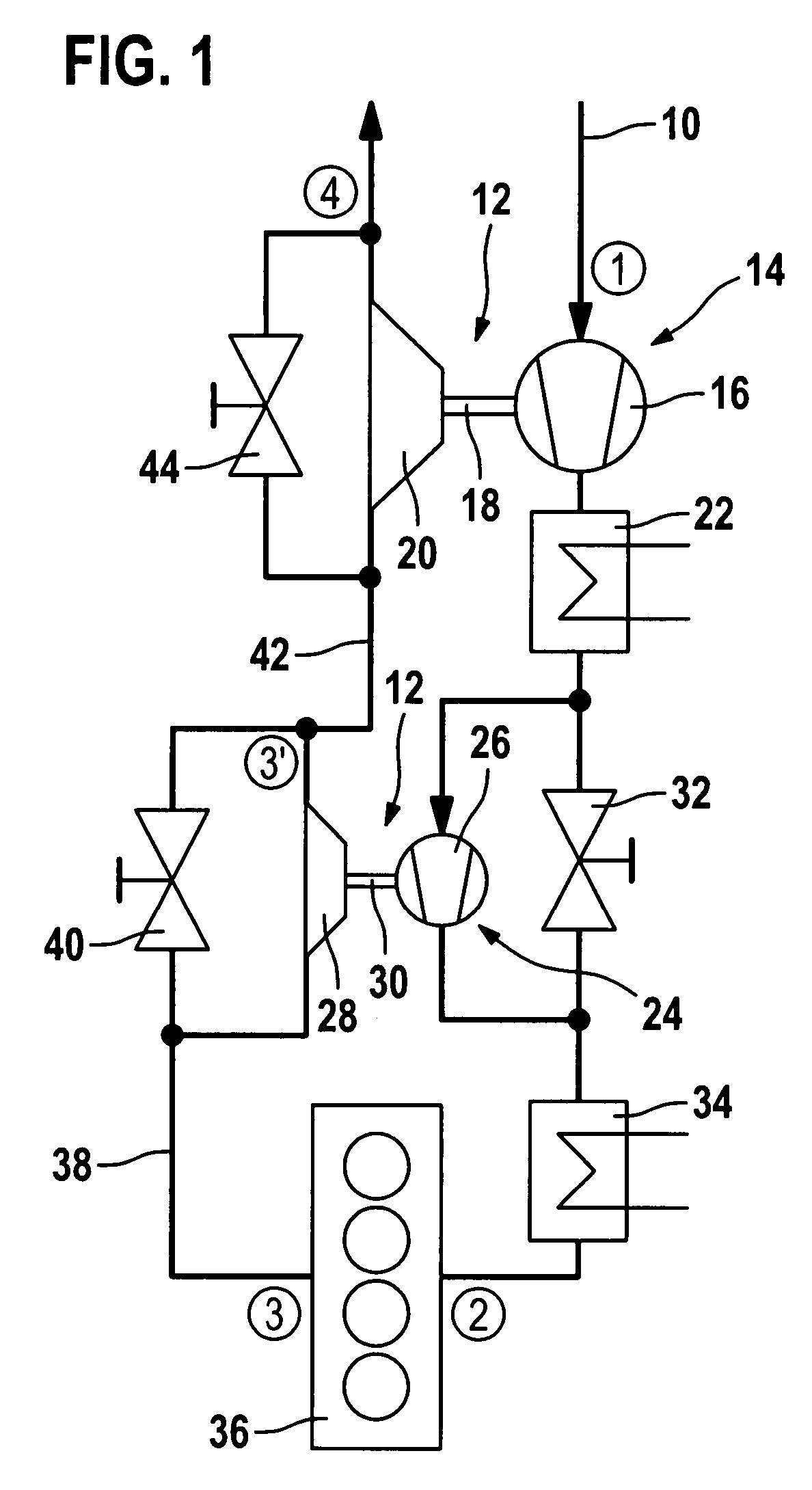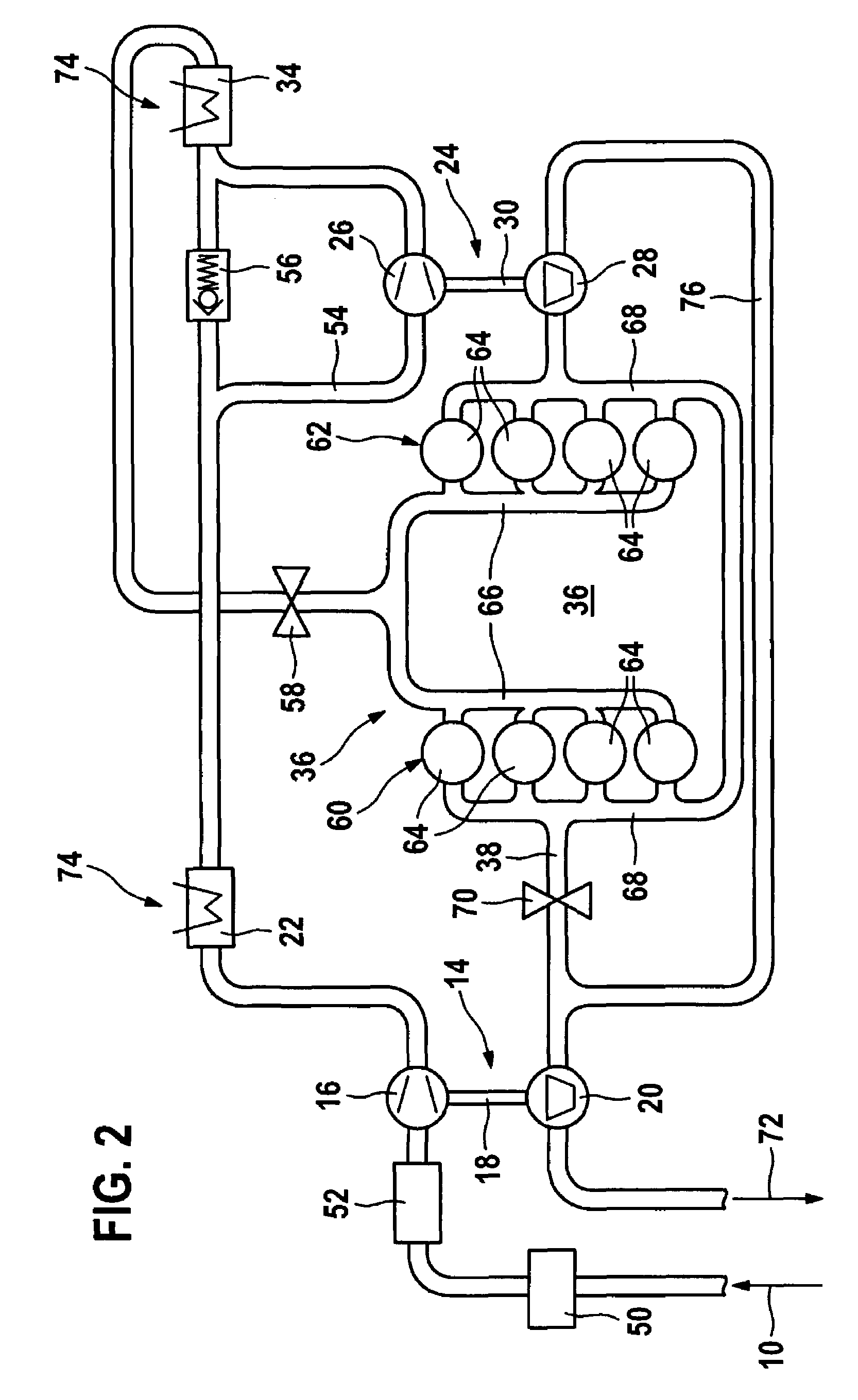Supercharging system for two-stage supercharging of V-type internal combustion engines
a technology of internal combustion engine and supercharging system, which is applied in the direction of combustion engine, internal combustion piston engine, machine/engine, etc., can solve the problems of short exhaust gas pipeline, and achieve the effect of reducing the loss of pressure, and reducing the amount of exhaust gas
- Summary
- Abstract
- Description
- Claims
- Application Information
AI Technical Summary
Benefits of technology
Problems solved by technology
Method used
Image
Examples
Embodiment Construction
[0014]The illustration according to FIG. 1 shows a schematic flow chart of a regulated two-stage supercharging system.
[0015]According to the illustration in FIG. 1, a two-stage supercharging system 12 has a first exhaust gas turbocharger 14 and a second exhaust gas turbocharger 24. Fresh air 10, which has a state (1), is compressed via a low pressure compressor part 16 of first exhaust gas turbocharger 14. The precompressed fresh air is cooled in a first charge air cooler 22 connected downstream from low pressure compressor part 16 of first exhaust gas turbocharger 14. In addition to low pressure compressor part 16, first exhaust gas turbocharger 14 also includes a low pressure turbine part 20 which is coupled with low pressure compressor part 16 via a shaft. After passing through first charge air cooler 22, the precompressed fresh air flows to a high pressure compressor part 26 of a second exhaust gas turbocharger 24. High pressure compressor part 26 of second exhaust gas turbochar...
PUM
 Login to View More
Login to View More Abstract
Description
Claims
Application Information
 Login to View More
Login to View More - R&D
- Intellectual Property
- Life Sciences
- Materials
- Tech Scout
- Unparalleled Data Quality
- Higher Quality Content
- 60% Fewer Hallucinations
Browse by: Latest US Patents, China's latest patents, Technical Efficacy Thesaurus, Application Domain, Technology Topic, Popular Technical Reports.
© 2025 PatSnap. All rights reserved.Legal|Privacy policy|Modern Slavery Act Transparency Statement|Sitemap|About US| Contact US: help@patsnap.com



